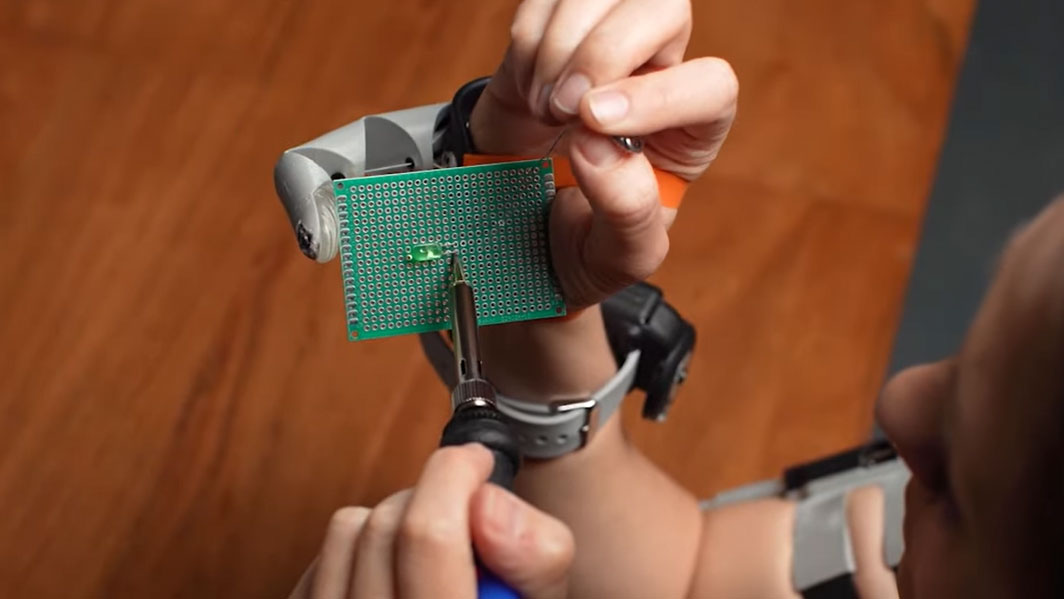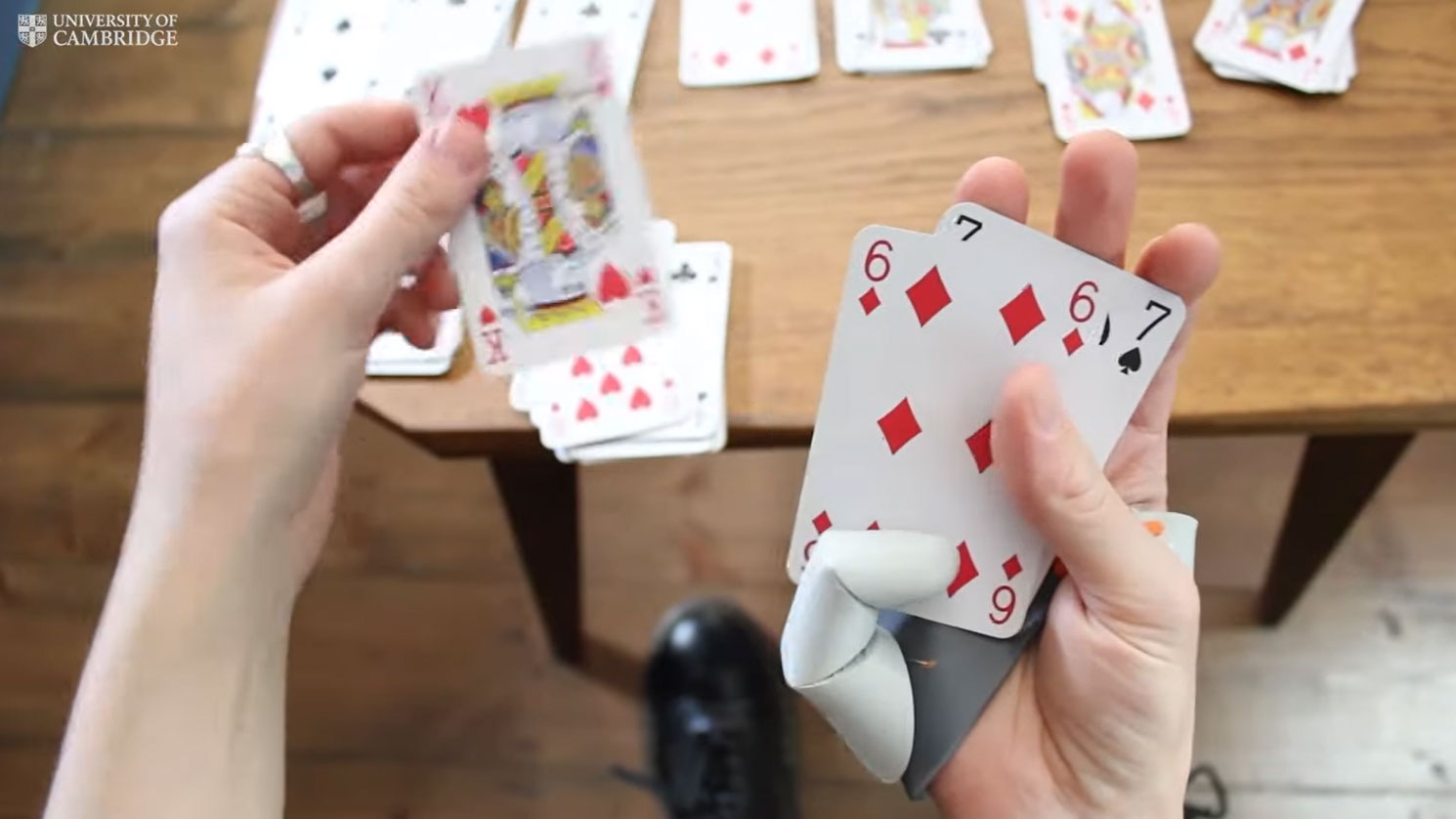Scientists demo robotic 'third thumb' — get a gaming advantage with an extra appendage
Using a third thumb is ‘easier than you might think.’

A team of researchers based at Cambridge University has showcased the utility value and ease of use of a third thumb. Thankfully, the proposed third thumb is mechanical, not a meat appendage. Nevertheless, it is “easier than you might think” to get comfortable using it for day-to-day tasks, assert the scientists, and it doesn’t take much longer for users to become nimble and dextrous.
In a recently published public demo video, we see users of the third thumb enjoy the extra digit in a wide range of tasks, doing things ranging from everyday tasks. The video also shows what must be more advanced users enjoying a game of soldering, playing Jenga, or even using the extra digit to play guitar. Tech enthusiasts are probably already expecting to see third thumb inspired peripherals for PCs – perhaps a range of input devices and controllers for gaming and VR.
The Cambridge researchers have designed the third thumb to be inclusive, and comfortable to use for a diversity of body shapes and sizes. In line with this, the researchers surveyed a very broad range of potential users aged from three to 96 years old. Remarkably, after just a minute of familiarization, almost everyone could use the device straight away. From 596 test participants, only 13 couldn’t perform some simple set tasks during the first minute of use. That’s a touted 98% success rate.
Looking more closely at the demographics, third thumb ability wasn’t greater for people considered to be ‘good with their hands.’ Left and right-handers, young and old, all adopted the third thumb very well. Only the outliers in that extreme age bracket were noticeably worse performers when using the extra digit (remember the study considered subjects ages 3 to 96).


Third Thumb Control
No sensors or probes attach to the location from where your third thumb sprouts. Instead, in the default setup, movement of the left big toe corresponds to the mech-thumb's up and down action, and the right toe pulls it across the palm. A wide range of intermediate and incremental movements can be made using your toes in concert.
The researchers hope the third thumb will be useful and applicable to a wide range of users across different ages, genders, weight, lifestyles, disabilities – as well as people’s cultural, financial backgrounds, and even likes or dislikes of technology. The development has potential for daily tasks, work, or pleasure among the non-disabled, but could equally be a useful augmentation to those who may be missing one or more digits.
Get Tom's Hardware's best news and in-depth reviews, straight to your inbox.

Mark Tyson is a news editor at Tom's Hardware. He enjoys covering the full breadth of PC tech; from business and semiconductor design to products approaching the edge of reason.
-
bit_user Reply
A+ for the reference! It's a good version, too. Aside from the weird incongruity of some sort of wireless network they're obviously connected to, while the plot revolves partially around payphones (or some kind of comparable public-access terminal), that movie aged pretty well.Notton said:So how do we go from this thumb to this sci-fi?
518ZOpyJvzE
To answer your question, I think we'd need to at least start by chopping off your hands... -
bit_user Oh, and I was going to say that using the thumb for gaming seems pretty dumb. A much better approach would be to bypass the thumb and jack the electrodes (pretty much) directly into the machine.Reply
